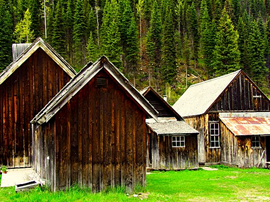Valuing historic buildings

|
There are no real hard and fast rules for valuing historic buildings and established valuation principles used for more modern buildings may not apply.
Valuations will be affected by styles, locations, condition, local and national policies, whether the building is listed or in a conservation area, the availability of grant aid, public perception and so on. In addition, it is difficult for valuers to be objective as considerations such as the nature of the surrounding area, convenience of access, and views of and from the property can be subjective.
Most valuers’ work is based on the concept of ‘market value’, which is the value the building might be reasonably expected to achieve after reasonable exposure in a free, stable market assuming that both buyer and seller are acting on their own free will and have a reasonable period in which to negotiate the sale. Real market value is not the same as the value to the owner, who may be affected by feelings of sentimentality and a distorted sense of worth. Also, value and price are not the same: even though prices are often the best indicators of market value, they are not decisive.
For more information see: Market value.
However, historic buildings can be unique or very close to it. This means that using market prices to value them is a difficult task. Furthermore, the legal restraints associated with any building works and the obligations to repair (e.g Grade 1-listed status) make valuing problematic.
Steps that may help establish the value of a historic building:
- Inspection, involving a detailed survey and analysis;
- Undertaking a historic survey involving any statutory listing, researching the building’s history and identifying any reference works, local records etc;
- Undertaking a detailed condition survey;
- Understanding the architectural qualities and any special features, their local significance and contribution to the visual environment or townscape;
- Understanding who is likely to be interested in buying the building, whether private individuals, companies, developers, local authorities, social groups etc;
- Understand and accounting for prevailing market conditions;
- Considering how much it could cost to repair or adapt and maintain the building for whatever use is envisaged.
- Understanding constraints on development. for example, listed buildings involve a government-imposed control on owners that could make repairs and refurbishments far more costly than might at first be appreciated;
- Considering whether the building has heritage value – can it be said to be a national treasure in any way?
- Considering how easy it might be to get grant aid.
- Assessing whether the building has any capacity to provide future income.
These considerations may help establish a historic building’s value, which in turn may help potential buyers (or sellers) make an informed decision.
[edit] Related articles on Designing Buildings Wiki
- Appeals against urgent works notices.
- Building Preservation Notice.
- Certificate of immunity.
- Compulsory purchase orders for listed buildings.
- Conservation area.
- Conservation officer.
- Ecclesiastical exemption.
- Enterprise and Regulatory Reform Act 2013 and listed buildings.
- Heritage partnership agreement.
- Historic England.
- Institute of Historic Building Conservation.
- Listed Building Heritage Partnership Agreements.
- Local Listed Building Consent Orders.
- Listed Building Consent Order.
- Manor Farmhouse listed building prosecution.
- Planning permission.
- Scheduled monuments.
- Society for the Protection of Ancient Buildings.
- Tree preservation order.
- Urgent works in advance of a listed building consent.
- Use of injunctions in heritage cases in England and Wales.
- Use of direct action in heritage enforcement cases in England.
- VAT - protected buildings.
IHBC NewsBlog
IHBC Context 183 Wellbeing and Heritage published
The issue explores issues at the intersection of heritage and wellbeing.
SAVE celebrates 50 years of campaigning 1975-2025
SAVE Britain’s Heritage has announced events across the country to celebrate bringing new life to remarkable buildings.
IHBC Annual School 2025 - Shrewsbury 12-14 June
Themed Heritage in Context – Value: Plan: Change, join in-person or online.
200th Anniversary Celebration of the Modern Railway Planned
The Stockton & Darlington Railway opened on September 27, 1825.
Competence Framework Launched for Sustainability in the Built Environment
The Construction Industry Council (CIC) and the Edge have jointly published the framework.
Historic England Launches Wellbeing Strategy for Heritage
Whether through visiting, volunteering, learning or creative practice, engaging with heritage can strengthen confidence, resilience, hope and social connections.
National Trust for Canada’s Review of 2024
Great Saves & Worst Losses Highlighted
IHBC's SelfStarter Website Undergoes Refresh
New updates and resources for emerging conservation professionals.
‘Behind the Scenes’ podcast on St. Pauls Cathedral Published
Experience the inside track on one of the world’s best known places of worship and visitor attractions.
National Audit Office (NAO) says Government building maintenance backlog is at least £49 billion
The public spending watchdog will need to consider the best way to manage its assets to bring property condition to a satisfactory level.















